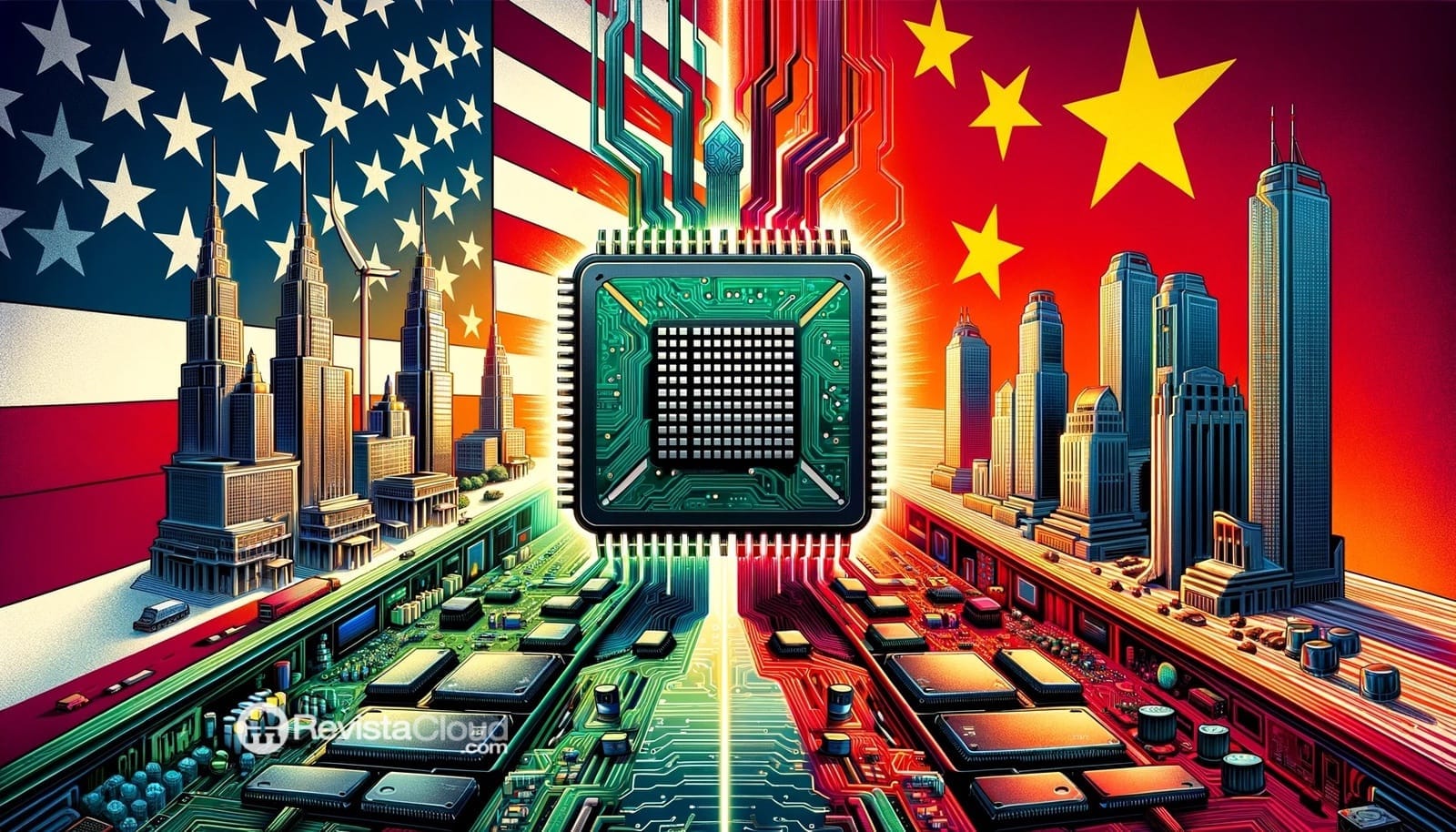The United States government has announced new and strict regulations aimed at limiting China’s and Russia’s access to advanced semiconductor technologies. These measures seek to curb the technological development of countries deemed adversaries and specifically affect chips manufactured using 14nm or 16nm lithography processes, as well as those containing over 30 billion transistors. This move marks a new chapter in the intense trade and technology war between Washington and Beijing and Moscow.
New Restrictions: 14nm and 16nm Chips Under Scrutiny
According to the regulations, companies wishing to export chips to China with these specifications must obtain a special license from the U.S. Department of Commerce. While less advanced chips or those packaged by “trusted” companies are exempt, the scope of the restrictions is broad, covering everything from high-end processors for artificial intelligence (AI) to conventional graphics cards for gaming.
Companies like NVIDIA, AMD, and Intel will be required to apply for permits even for products of lesser strategic relevance. This could complicate their operations in markets like China, one of their primary destinations for technology products. Although the restrictions will have a limited impact on consumer devices, such as processors for personal computers or smartphones, the goal is clear: to restrict access to technology that could be used for military or strategic purposes.
Impact on the Global Chip Market
The regulations also affect other countries that trade technological products with China. Europe, traditionally an ally of the United States, has expressed concern over these measures, as they could disrupt global supply chains and increase the cost of technological development in regions that rely on international cooperation.
For instance, in the realm of graphics cards, AMD is expected to be unable to ship models like the RX 7800 XT to China, and the arrival of future GPUs, such as the hypothetical RX 9060 XT, may face obstacles. NVIDIA, on the other hand, will see its exports of GPUs limited starting from the RTX 4060 Ti series onwards, including models like the upcoming RTX 5070 Ti. This blockage not only affects gaming products but also those designed for advanced AI tasks.
The Geopolitical Strategy Behind the Restrictions
These measures are part of a broader strategy to maintain U.S. leadership in advanced technology and protect national security. The tightening of regulations reflects Washington’s growing concern about preventing countries like China and Iran from accessing critical technology through intermediaries or indirect acquisitions.
The Biden administration aims to lay the groundwork for a more stringent approach that could be expanded by a future Trump administration, should his plans to return to the White House materialize. This underscores the United States’ intention to strengthen its control over the export of key technologies and ensure that manufacturers comply with the new regulatory standards.
A Future Marked by Technological Tension
The impact of these restrictions goes beyond China and Russia, creating uncertainty in global technology markets. The traceability of semiconductors and compliance with regulatory standards will be key challenges for companies in the sector, which could face a significant reduction in their customer base in markets like Asia.
In an unprecedented context of technological and trade war, these measures reinforce the pressure on industry players to adapt to a more regulated and competitive environment. The consequences of this decision will be evident not only in the economies of the affected companies but also in the pace of technological innovation globally.
via: El Chapuzas informático and Bloomberg

